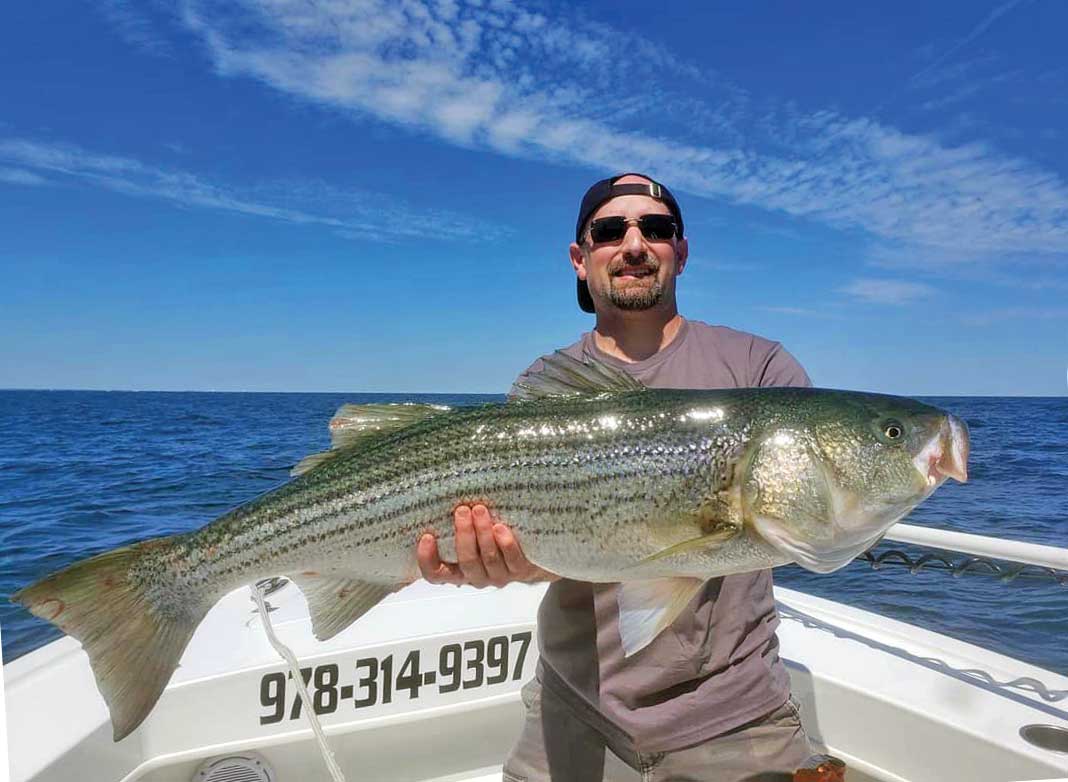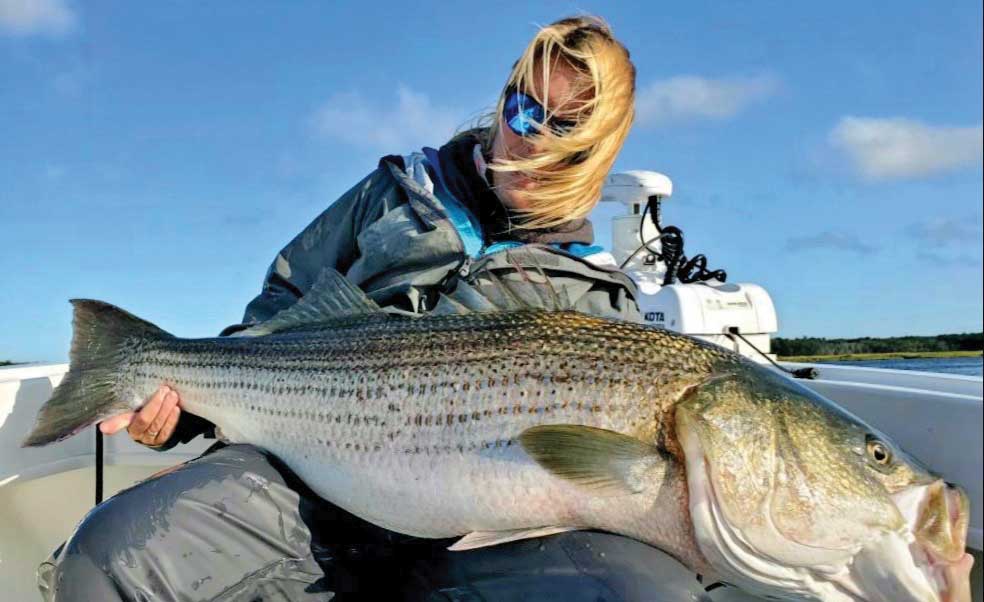The hunt for big fish is all consuming. As anglers lay awake the night before a big trip, a mental checklist goes through their minds. Is my leader strong enough? Are my hooks sharp enough? Will they be where I found them last week? They’ve spent years studying the fish, reading everything they can, hanging around every bait shop, building a network of anglers to share info with. Their life revolves around that fish.
Sadly, one can argue they’ve been doing it all wrong. They’ve been doing it backwards. There is a Native American adage which states, “To know the owl, one must study the mouse.” The fish we target are far less elusive once you understand their food source, the driving force behind every decision they make. We spend all our time studying the fish, our tackle, knots and techniques while neglecting the mackerel, bunker, sand eels and other baitfish that truly matter. Trophy hunters who catch live bait each morning know this. We often credit live bait to their catches but it’s deeper than that. Their knowledge of the bait gives them insight to the fish they target. Their knowledge of the bait allows them to catch it fast and dedicate more time targeting trophies.

Hailing from Newburyport, MA, Captain Chris Valaskatgis of Manolin Charters is one such person. His home waters are highly pressured by other anglers so he relies on live mackerel to entice larger fish. “It’s no secret that the best striped bass fishermen in the Northeast are also the best at finding bait,” states the captain. “Many times getting bait can be harder than actually finding the striped bass themselves! The key to making bait is efficiency, plain and simple.”
Before leaving the dock, Chris recommends looking over your charts. “I focus on tight bunches of contour lines that indicate sharp depth changes causing natural current upwellings. These humps and ledges gather all types of micro life that mackerel feed on” Depths can vary from 40 to 120 feet, but all contain fast drops or peaks. Running to these spots, it is critical to look for on-water indicators such as tidelines, birds, weed beds, and water color changes. Many times, you can stop short and fish a situation that just presented itself to you. “If have a feeling that an area is holding bait, I verify using electronics which act as my underwater eyes. I engage the MEGA Side Imaging and 2D sonar on my Humminbirds and start scanning. If they get within 100 feet of either side of me, I’ll see them on the screen”. Once discovered, the area is chummed using at least ½ gallon of frozen ground up mackerel or herring.
In large areas holding a lot of bait, a drift is preferred to cover water. “I use the COG (course over ground) vector on my SOLIX to determine the exact lineup of my drift. When you get into good action, it’s important to note where you are in relation to the structure. Sometimes the mackerel will hang on a high spot, and other times they may be 50 feet away from the drop. I often drop a waypoint in the area I’m catching so I can duplicate my drift and concentrate on high-percentage areas”.
When it is too windy, or if the mackerel are hanging on one specific area of a ledge, Captain Valaskatgis utilizes a trolling motor. “The Minn Kota Ulterra with Spot-Lock has changed the game for me the past few seasons. With the press of a button, I’m anchored. This is critical when I find bait in tight schools confined to small areas. In these conditions it used to take an hour or more to catch enough bait as it took multiple drifts while only being over the productive water for seconds. With Spot-Lock, I stop the boat mid-drift and catch every mack in the school.” Less time spent on the bait means more time targeting striped bass!
“For gear, I use light spinning reels with 15-pound mono on 6-foot fiberglass rods. Mono is easier to untangle and the stretch creates cushion. Bringing six macks to the surface means nothing if you lose half of them swinging over the edge.” The fiberglass rod and mono combo help with this. “At the end of the line, I thread on a bead and tie a TA Power Clip which attaches to my size 8 Sabiki Rig.” Depending on skill level of his clients, or number of people in the boat, he will often cut a 6-hook rig in half stating it’s much more manageable than handling a full rig of macs flailing around with razor-sharp hooks. At the bottom of the rig is a 1.5-ounce jig with a single hook to prevent the tangles seen with trebles.

The key to this type of fishing is keeping lines vertical and hitting the correct depth. “Correct depth comes from watching your fishfinder for schools. If I’m marking clutter at 40 feet, that’s where we want our baits. If I’m not marking bait, 20-30 feet is a good starting point.” For clients not in position to view the Humminbird and watch their bait fall, Chris teaches a system to accurately know bait position. The Sabiki rig and rod tip are put to the surface with an open reel bail. A quick upward sweep of the rod pulls line. That pull is about 5-feet long and anglers count their “sweeps” to know depth. Four sweeps would be 20 feet, five sweeps would be 25 feet, and so-on. The fall is controlled on a semi-slack line. If a fish eats, you want to get tight quick so the fish can’t swim sideways and tangle others. Communication amongst anglers is critical, making note of depth when they get bit so others can either drop down or reel up into the strike zone.
When a mackerel strikes your rig, it’s important to relax and not reel fast. With multiple hooks on a single line, the longer you keep your bait in the water, the more likely you are to come up with multiple fish. As the loaded Sabiki comes to the boat, clients are instructed to leave it for a few seconds before swinging it aboard. The flashing silver of multiple mackerel often attracts others to come and inspect the chaos. Working as a team, anglers take turns dropping into the school, making sure to always keep a few mackerel flashing in the water when possible. “Teamwork determines the success of it all. We can work together and catch enough bait in 5-10 minutes, or we can work as individuals and take several hours, losing precious time striper fishing. It’s that extreme. As one person catches, another de-hooks and throws them in the live well. Bleeders are set aside and thrown in a cooler with ice to be used as chunk bait if necessary. It’s a beautiful thing,” jokes the Captain.
Regardless of where they’re from or the species they target, anglers have a lot in common. All aspire to be considered “fishy” by their peers and renowned for their ability to catch. All lose sleep over giant fish and get excited by the sound of a drag peeling. It’s universal. Unfortunately we spend little time focusing our efforts where it truly matters and in an area that will make us better fisherman. To be “fishy” is to think like a fish. To think like a fish is to concentrate on its food source. Aside from the spawn, gamefish have just one goal in mind: to eat and get big. Focus less attention on the owl and more on the mouse to catch trophies.
Chris Valaskatgis runs Manolin Charters out of Newburyport, MA. You can reach him at 978-314-9397 or visit his website http://www.manolincharters.com/



